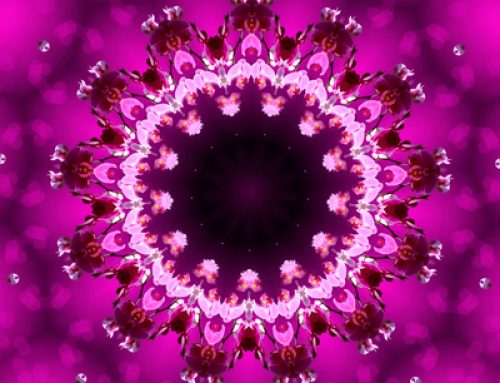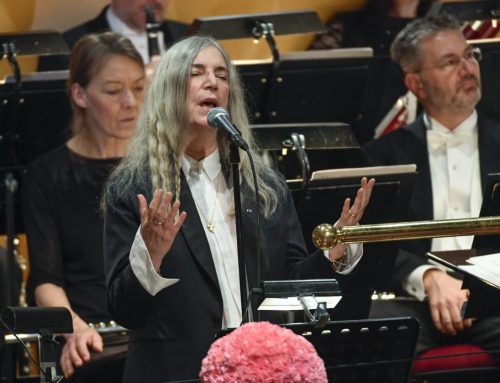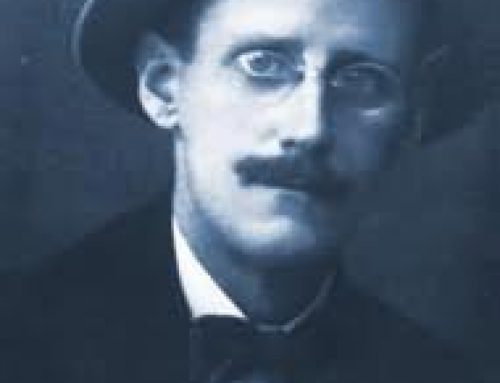« Ulysses, » episode 3: reading notes
(version française à venir)
Homeric link/lien avec Homère: Proteus/Protée
Place/lieu: The strand/la plage
Hour: 11 a.m./11 heures
Color: Green/vert
Body part/partie du corps: None/aucun
Art/science: Philology/philologie
Symbol: Tide/la marée
In this last of the first three episodes (the first triad), Stephen is truly alone for the first time in the book, and as morning slips to midday his interior monologue comes rising and falling, crashing and subsiding like the waves of the sea he contemplates while out walking on Sandymount strand. This is perhaps the most important episode in understanding the spiritual premise of “Ulysses.” Nothing in it is stable.
From the first line, Stephen’s mind is revealed to be inquiring into the nature of reality, the nature of what is seen and what is not seen, the relation of “I” to space and time, the mysteries of form, emptiness, self, impermanence, birth, death, creation. Stephen wrestles with the “ineluctable modality of the visible,” which includes the form of his own self, and his quest for the “hidden” essence, “beyond” or “within” the substance.
Proteus, the Egyptian god of the sea, is by nature impermanent – he represents change, flux, instability. His nature is that of Stephen, too, and of all things. Everything in this episode is flowing and shifting: Stephen’s mind, the tides, the sands, the roving dog and the cockle-pickers, the midwives, or frauenzimmer. Stephen will take a pee and pick his nose – his body, too, is ever-changing, its stuff endlessly transformed.
As William Tindall writes of this episode, “We find ourselves peeping into the mind of a philosopher-poet, a rich, learned, and allusive mind, always a little beyond us.” This is Joyce’s intent, displaying, as Stuart Gilbert writes, “conscious virtuosity in the handling of language.” As we will discover in the next episodes, however, Bloom’s mind is radically different, that of Everyman, more earthy and earthly. And later, Molly Bloom’s mind will be revealed to be something else entirely.
The link with Homer’s “Odyssey” is somewhat indirect, yet nonetheless relevant. In the “Odyssey,” after consulting Nestor (Deasy of episode 2), Telemachus sought the counsel of Menelaus, who had gone off to war with Odysseus but had since lost all trace of him. Menelaus tells Telemachus of his pursuit of Proteus, the old, elusive sea-god who is endlessly changing forms. Only if captured will Proteus give Menelaus the prophecy he so desires, which is none other than the way of his return home from war. Only when “captured” will form (the visible) and nonform (the invisible) reveal their truth. But how, Stephen is wondering, can what is constantly moving be “caught”?
Joyce’s symbol for the episode is the tide and its inexorable movement, which illustrates the unending transformations of all of life. Again, this is the very nature of all beings and things.
The episode’s color is green, the color of the sea (“snotgreen”) and of the seaweed, of plants and trees, and it represents growth and transformation. It is also the color of Stephen’s epiphanies written on “green oval leaves” and the snot he picks from his nose. Among other allusions to green in this episode: In Stephen’s memory of visiting Uncle Richie there are references to Verdi – “All’erta!,” and Ferrando’s aria de sortita. (p48, lines 28-29; version française: p55, lignes 26-28) – whose name means green. (Joyce was an opera lover.)
Philology, the science of language, is the “art” of the episode. Human language and speech are also ever-changing – impermanent – as Joyce illustrates more and more as the episode (and book) evolves. A modality of our humanness is language — one of the “signatures,” or expressions, of our being. Philology is an attempt to learn to read the signatures. What, Zen students are sometimes asked, is the last word of Zen? The “signs” are always here, but we fail to “see” them.
Joyce employs bits of many languages in this episode – French, German, Italian, Latin, etc. – and even a Gypsy dialect when Stephen sees the cockle-pickers. The sea also has its language, as does the urine: “Better get this job over quick. Listen: a four-worded wavespeech: seesoo, hrss, rsseeiss, ooos. Vehement breath of waters amid seasnakes, rearing horses, rocks. In cups of rocks it slops: flop, slop, slap… And, spent, its speech ceases.” (p62, lines 18-22; VF p68, lignes 7-12). Everything speaks; we just need to listen. “These heavy sands are language tide and wind have silted here,” Stephen thinks.
Stephen’s mind is ever in flux, jumping from subject to subject, thought to thought with great speed and seeming incoherence. It reflects the movement of the sea, and the slippery and elusive Proteus. Like Proteus and the sea, mind is ungraspable. Bring me your mind, Bodhidharma told his disciple Eka, and I will put it to rest. Eka searched and searched and finally returned to say that he could find his mind nowhere. To which Bodhidharma replied: I have put it to rest. In another famous Zen story, two monks are arguing over a flag: One says it is the flag that is moving, the other says it is the wind that is moving. The great master Hui Neng – the 6th patriarch of Zen – arrives. It is neither the wind that moves nor the flag, he says, it is your mind.
Whereas the first episode was associated with space and the second with time, this third episode deals with spacetime, or timespace. Sand becomes water and water sand, shifting under Stephen’s feet. Everything moves. In the triangle of the first three episodes, space and time are the two bases and spacetime/timespace is the transcendent, or intergrated, apex.
Nothing really “happens” in this episode. The action is little more than Stephen walking along the beach, reflecting, reminiscing, dreaming. He will see a live dog, which will scare him, and a dead one’s bloated carcass. He will write the beginnings of a poem on a scrap of paper torn from Deasy’s letter. He considers paying a visit to his aunt and uncle, recalls past visits, but then finds himself walking on toward the Pigeonhouse breakwater. Two “frauenzimmer,” one lugging “lourdily her midwife’s bag,” come into view, and later a couple of cockle-pickers and the dog. On the rocks Stephen will stretch out, then have a pee (“In long lassoes from the Cock lake the water flowed full…” p62 line 14, VF p68, ligne 3; there really is a Cock lake, but this is also his bladder). He will deposit a bit of dried snot on a rock, and, turning, will see a ship passing, “homing” like him, upstream.
Interspersed throughout is the display of Stephen’s mind. There are memories of his stay in Paris (including a paragraph of marvelously glistening prose, “Paris rawly waking…” p52-53, lines 28-33, 1-4; VF p59, lignes 19-27) and thoughts of Mulligan and Haines (“the panthersahib and his pointer”), whom he recalls he is to meet at a pub, The Ship, at half twelve (p47, VF p54) after delivering Deasy’s letter to the press. He vows not to sleep in the “cold domed room of the tower” when night comes. There are lengthy meditations on the visible (form) and what lies unseen within (emptiness, or nonform) and on time and space. All the while, Stephen’s feet are sinking into the wet sand slapping around his (Mulligan’s) boots.
To Stephen’s mind come two German words: Nacheinander, which means one thing after another (time), and Nebeneinander, which means one thing beside another (space). If it were not for time and space, there would be no separation: We are separate from those who came before or after by time, and we are separate from those in the next room by space. But we are all one body here, in the present moment. “My two feet in his boots are at the end of his legs, nebeneinander,’’ thinks Stephen, who is wearing Mulligan’s trousers and shoes. (p45, line 27; VF p52, lignes 21-22) If not for space, he could be Mulligan.
Far out in Dublin Bay, Stephen spots a boat that is on the lookout for a man who drowned nine days before off Maiden’s rock. (p57, lines 10-21; VF p63, lignes 18-29) The “drowned man” is the true self lost in the ocean of ignorance, drowned in the frenetic sea of our daily lives, in the tumultuous depths of our deluded, “separate” selves. “Would you or would you not?” Stephen asks himself. That is, will he “die” to save his true self? “The truth, spit it out,” he insists, wrestling with the fear of letting go. He then sees “the tide flowing quickly in on all sides,’’ the separations dissolving, and longs for solid ground under his feet. “I want his life still to be his, mine to mine.” To “die” to himself is to let go of the shell of his being – the limited modality of Stephen – and to open to the boundless. It is to unite, or become one, with all beings, to become whole, thus saving himself and the drowned man. “With him together down,” Stephen realizes. This strikes to the heart of the book, to a truth transcending time and space and separation, where all is one and compassion functions freely. It brings us to Joyce’s ultimate theme. Stephen is searching for that oneness, and senses what naturally flows from it. Many hours later, Bloom will offer him confirmation.
The first paragraphs of this episode tell all. Such is their utter density and beauty that a lifetime of study could be devoted to them alone. The following brief indications may help to decipher these comparatively difficult, yet crucial, passages.
This is Stephen’s soaring mind in full flight:
“Ineluctable modality of the visible: at least that if no more, thought through my eyes.” The unavoidable solidity of the world of form is seen, experienced through the eyes. Its “signatures,” its “colored signs,” are, we might say today, in your face, and yet, as Stephen then notes, what is seen is limited. What lies behind or within? What is not solid, what is it that the eye cannot see? Which brings him to Aristotle, the “he” of “But he adds: in bodies,” the “maestro di color che sanno,” or “master of those who know,” which is how Dante identified him in his Inferno. Aristotle maintained that it was color that made things visible. But science has shown us that “there are no colors,” as Joseph Campbell notes, “there are only light waves that hit our eyes.” The colors, that is, are all in our minds. In fact, everything is mind. And still we cannot help but bump into the “solid” reality of form, inevitably with our “sconces,” or heads.
Aristotle sends Stephen, who has been looking outward, inside. Zen Master Dogen did the same, urging each of us to “turn the light inward.” Stephen notes the duality of in and out, of diaphane and adiaphane, seen and unseen. Only when these dualities are transcended can we experience things truly as they are, in all their simple, raging glory. This episode, remember, is the third part of the first triad, the transcendent apex of the triangle, the two opposing bases of which are always dualistic.
“If you can put your five fingers through it, it is a gate, if not a door.” A door shuts us out; a gate lets us through. Reality is not limited to the world of form, and form is neither solid nor fixed. To stop at the visible is to shut the door on the whole of life. But in order to encounter what is “unseen,” we must plunge our five fingers into what is “seen.” We must dive headfirst into our lives, into whatever is at hand; we cannot, as Stephen is wont to do, ignore the phenomenal world. Form is our gate to nonform, but if we limit it with our ideas, opinions and concepts, we make it a door. It becomes an obstacle to our realization of our true, boundless nature. The first form that we limit with an idea is “me.” But the self is neither limited nor solid nor fixed, and is by nature as ever-changing and transient as the sea.
“Shut your eyes and see.” Look inward. Does the phenomenal world depend on being seen by me for its existence? Eyes closed, Stephen hears the crack of the sea-forms under his feet, “the ineluctable modality of the audible.” He walks on “in the dark,” “ash sword,” or ashplant, a cane he always carries, at his side. “Tap with it: they do,” he thinks, referring to blind people, who encounter form without eyes. For now, Stephen is blind to his true nature. The tap-tap, tap-tap motif runs throughout the book, a “blind” man making his way toward “sight.”
“Am I walking into eternity along Sandymount strand? Crush, crack, crick, crick.” There is only this, now, here. The crunch underfoot brings Stephen back to Deasy and his shells empty of life, but also to the rhythm of life heard by the poet. “Rhythm begins, you see. I hear.” The first lines of a poem he will write come to him before he then decides to open his eyes. But will all have vanished? he wonders. Will he remain forever in the blackness of the unseen?
“See now. There all the time without you: and ever shall be, world without end.” Form does not exclude nonform, nonform does not exclude form. To see the bright face of the moon we need not deny the dark, unseen face. “I” is not the point of reference for the innumerable phenomena manifesting infinitely.
Moreover, this seemingly limited, separate self, as Stephen notes, is part of the infinite, interconnected whole. He wonders what is in the midwife’s bag, surmising that it is “a misbirth with trailing navelcord.” (p46, lines 19-23; VF p53, lignes 20-25) Then he adds: “The cords of all link back, strandentwining cable of all flesh. That is why mystic monks. Will you be here as gods? Gaze in your omphalos.” No self exists independent of all others. Each and all are divine, each earthly life manifesting the infinite, in every moment. The omphalos, Greek for navel, is the center of one’s being, like the Zen Buddhist hara. Gaze into it, therefore, and you will find the infinite light of your true self, shining.
Stephen’s inexorable train of thought, half mocking, half serious in tone, flits from navelcord to cable to telephone line: “Hello. Kinch here. Put me on to Edenville. Aleph, alpha: nought, nought, one.” (Remember that Mulligan called Stephen “Kinch the knifeblade.”) The umbilical telephone line links us all, back to Adam and Eve in Eden(ville), to an unknown “source,” (“Creation from nothing”), whose number is, appropriately, “nought, nought, one.” Note also that aleph is the first Hebrew letter (Bloom is a Jew) and alpha is the first Greek letter (Dedalus is a Greek name).
In raising this notion of interconnection, Stephen comes to the theological term consubstantial, which means “of one substance.” Christ said, “I and my Father are one,” and was crucified for it. Yet this is the mystic experience: You are the divine being that you are seeking elsewhere. In Sanskrit, it is “tat tvam asi” (« you are that, » or in French, « tu es cela »). But Stephen is still questioning, wondering about his parents (“the man with my voice and my eyes and a ghostwoman with ashes on her breath”) and searching for the spiritual “father” who will lead him “home.”
There is a premonition of Bloom as Stephen recalls a dream from the past night. (p58-59, lines 33-34, 1-5; VF p64-65, lignes 36-37, 1-4) In it, an Oriental man encountered in the “street of harlots” speaks and then leads him, offering him a “creamfruit” melon. He invites Stephen in: “Red carpet spread. You will see who.” And so he will.
— Amy Hollowell Sensei











Leave A Comment